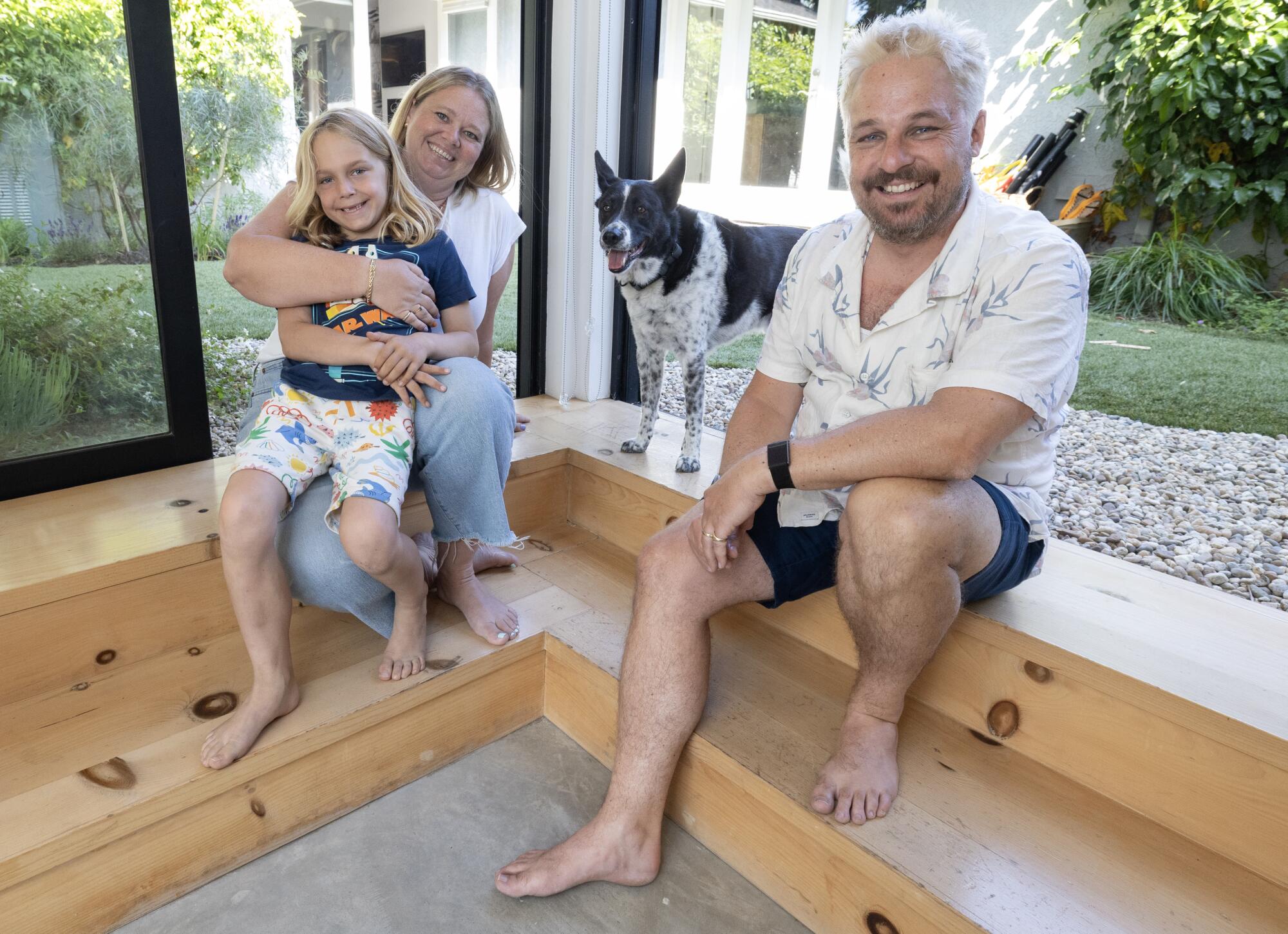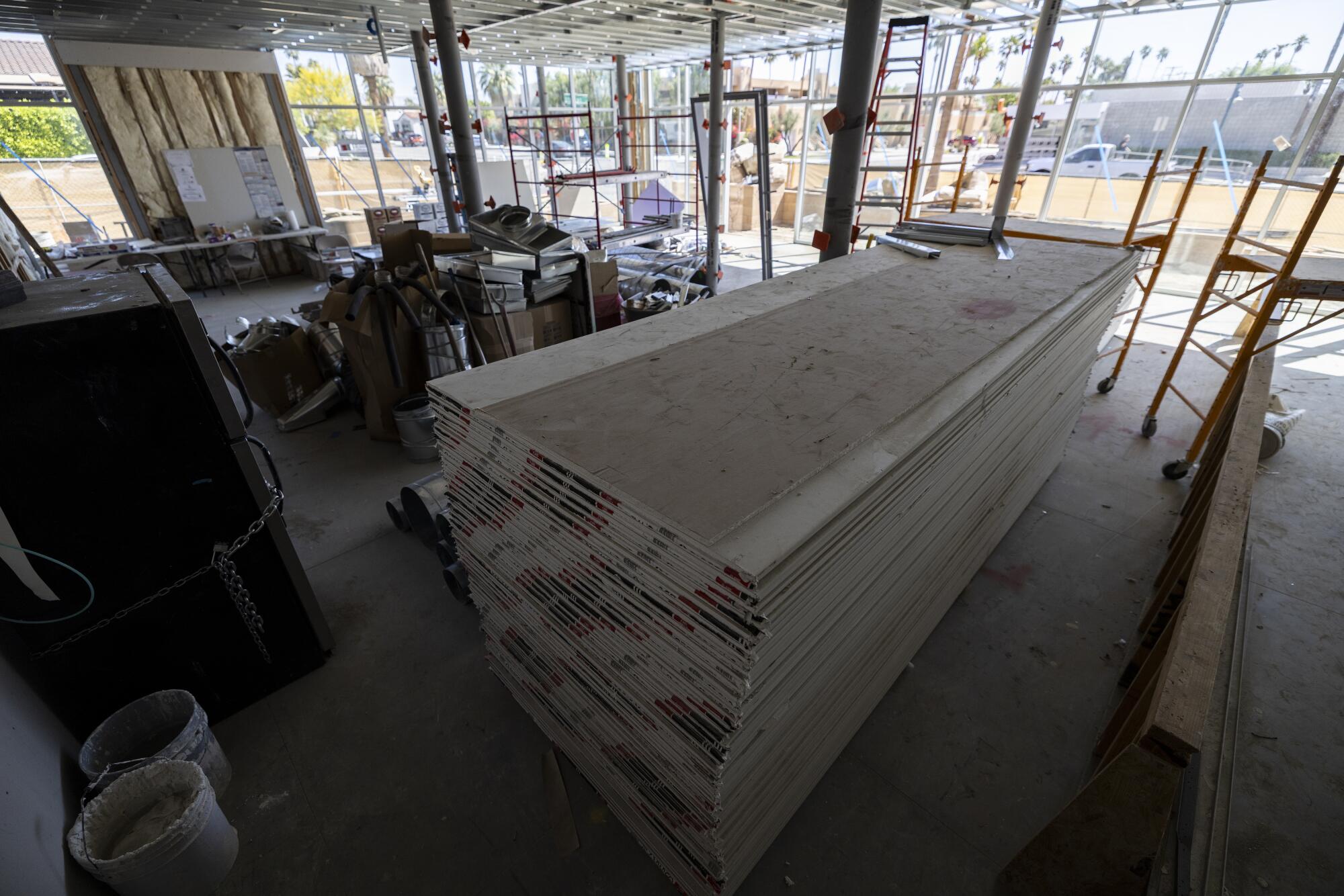Surprising Venice ADU serves as office, guest suite and movie theater
Barefoot, in shorts and a tropical-themed short-sleeved shirt, Will Burroughs walks through the narrow backyard of his Venice home and passes a football to his 7-year-old son Jack.
It’s a playful moment that instantly sparks the curiosity of the family’s Australian cattle dog, Banjo, who comes running from the first floor of the newly added accessory dwelling unit, or ADU, at the rear of the property.
Even though it’s a small gesture, it encapsulates what Burroughs and his wife, Frith Dabkowski, hoped for when they added the ADU to their backyard.
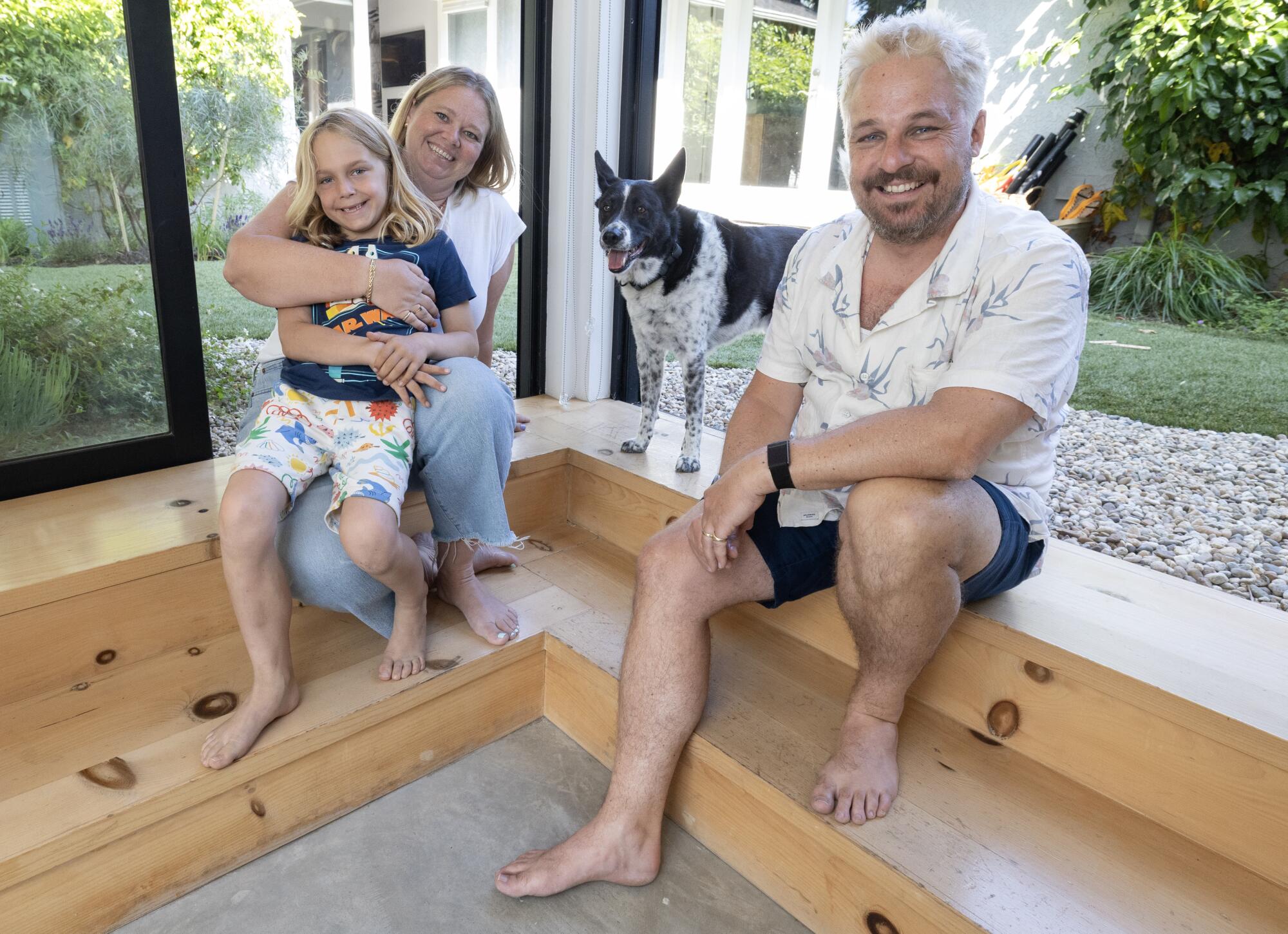
With their home in the background, Frith Dabkowski and husband Will Burroughs are joined by their son Jack and dog Banjo on a single ribbon of wood that runs the entire length of the garage.
“They’re fun,” architect Aejie Rhyu said of the creative couple as she walked by the undulating two-story ADU she helped them realize.
Rhyu’s assessment helps to explain the joy that permeates the family compound, from the pink Los Angeles Toile wallpaper in the bedroom (humorously adorned with illustrations of L.A.’s beloved mountain lion P-22, the La Brea Tar Pits and Grauman’s Chinese Theatre) to the tricked-out garage on the first floor, which includes overhead bike storage, an espresso maker, a mini-fridge and a large flat screen TV that allows Sydney-born Burroughs to watch Formula 1 car races and cricket games at 4 a.m. when his family is asleep.

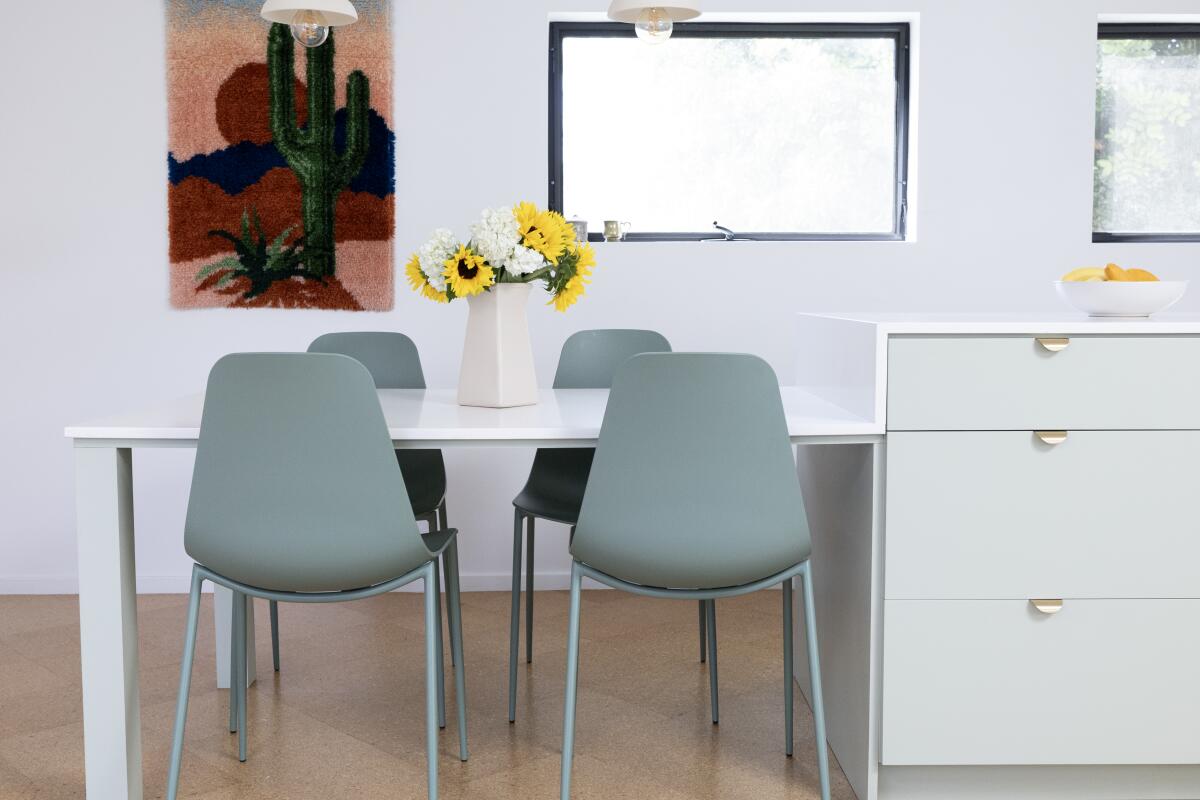
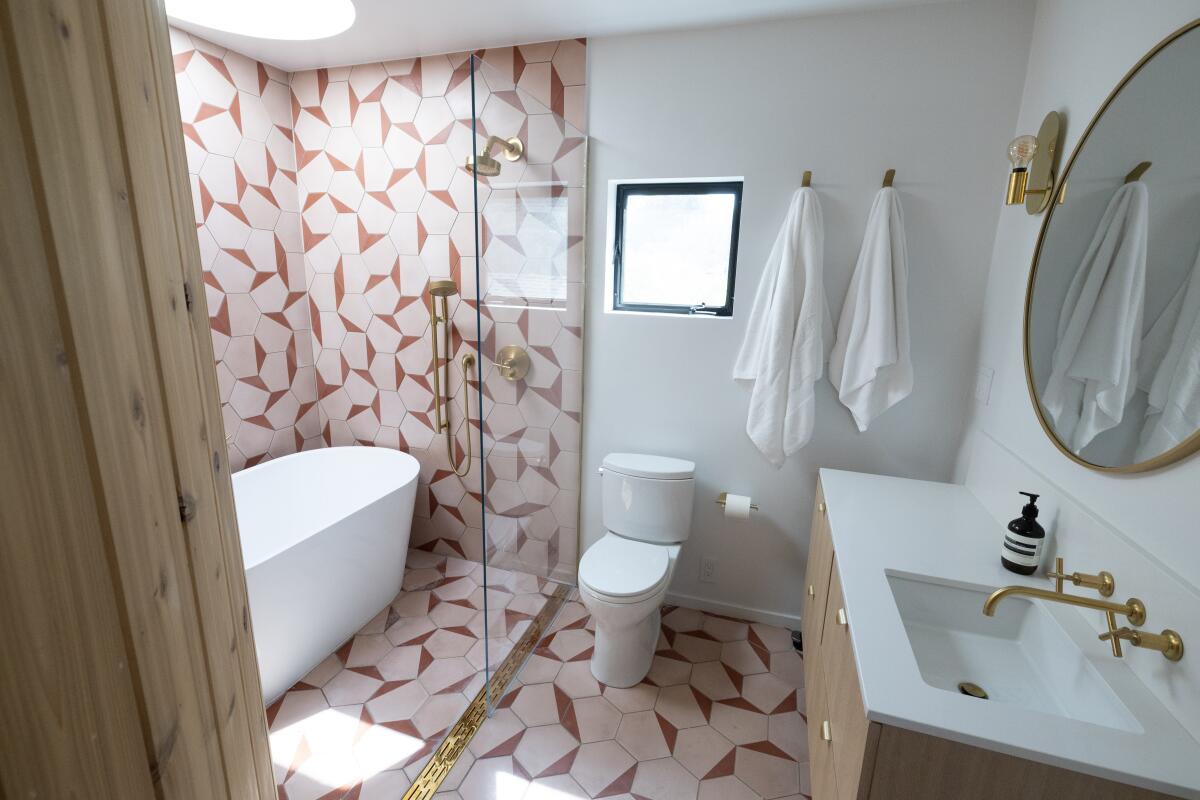
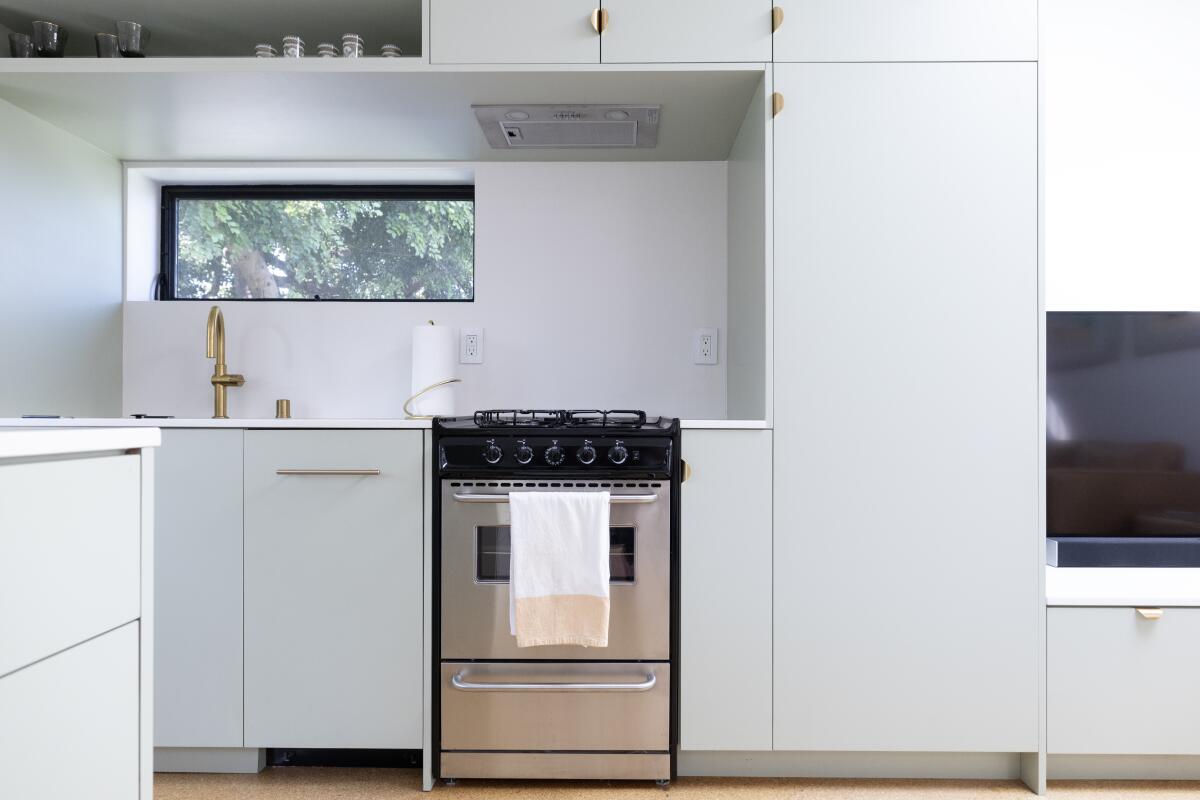
The one-bedroom unit features a full kitchen, custom millwork, colorful bathroom tile and a waterfall island that dips to create a dining room table.
Like so many ADUs in Los Angeles, the couple’s addition was driven by a need for more space to accommodate work and family life. At a time when California ADU laws continue to evolve to encourage more housing, the couple saw it as an opportunity to demolish their garage and build a new multipurpose flexible space that includes an office, garage and housing for family members from Australia who stay for weeks at a time.
To help them create an ADU that was fun and ambitious, Burroughs reached out to his childhood friend, Australian architect James Garvan, whom he has known since kindergarten.
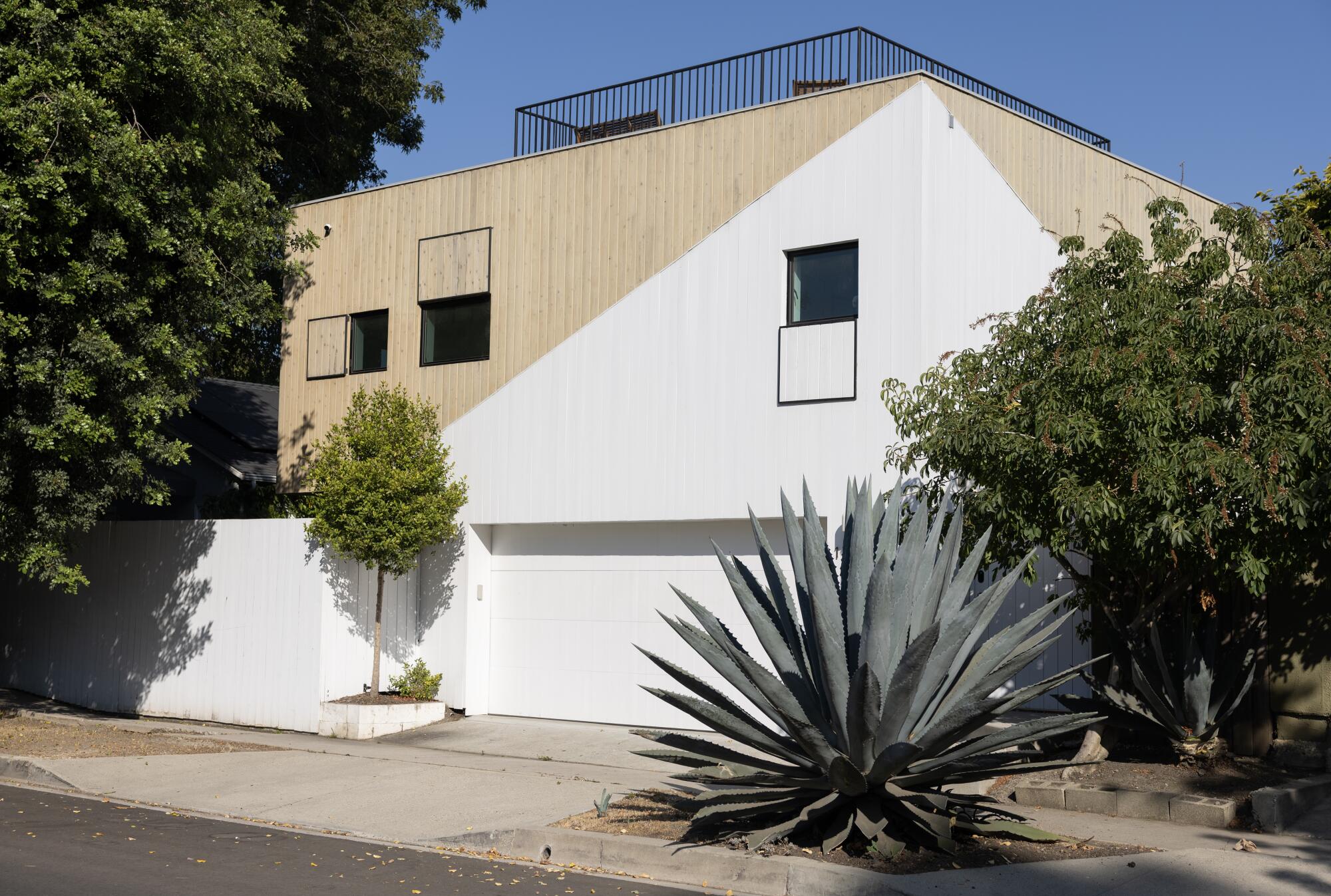
A view of the ADU, including its rooftop terrace, from the street …
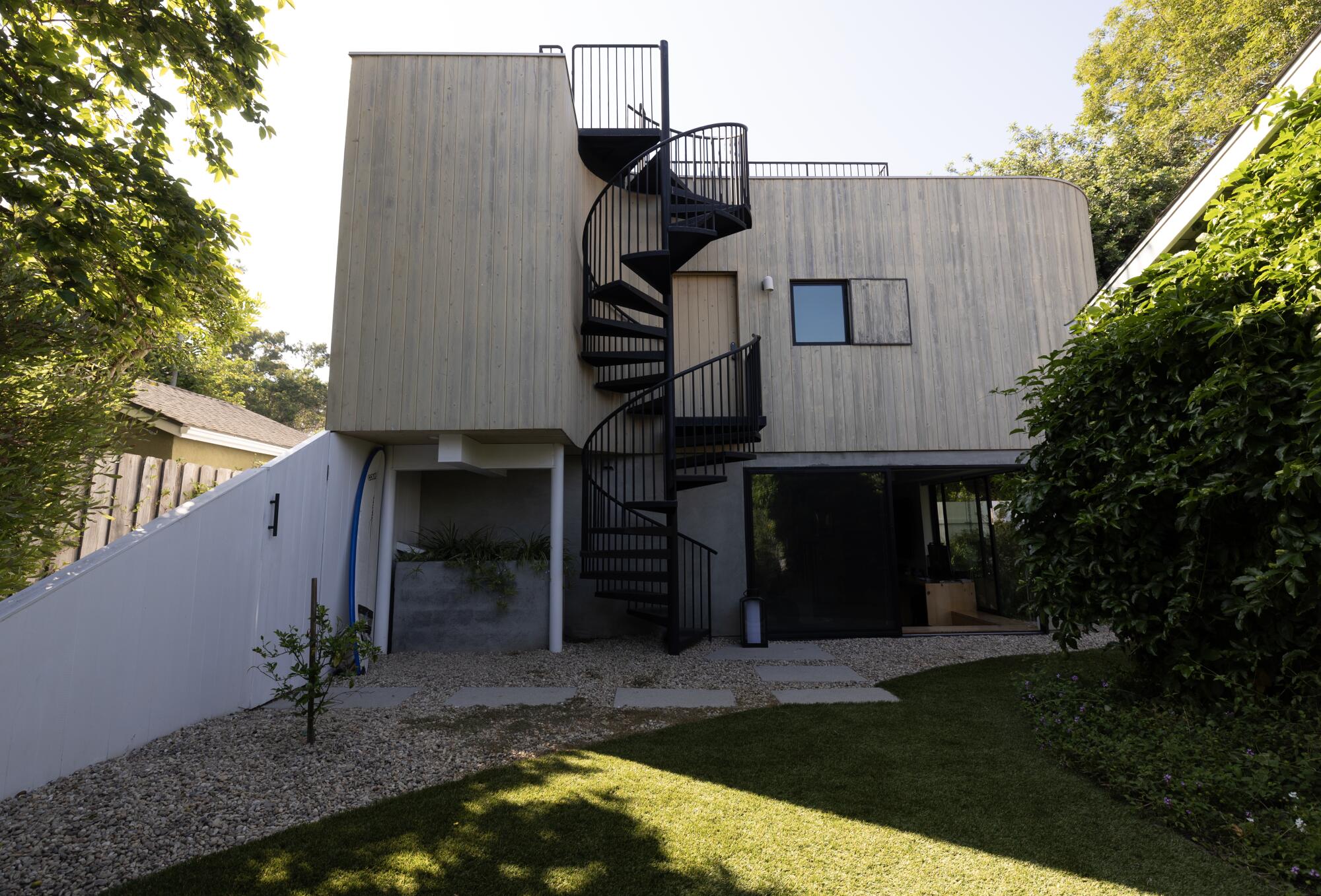
… and from the backyard.
Garvan said that when he first received a call from Burroughs about designing an ADU, he was impressed by the American concept of adding a second home on the same property as a larger one. “It’s an elegant way to activate parts of the city that are otherwise unused,” he said.
The couple collaborated with Garvan on the design plans, but because he was in Australia, they subsequently engaged local architect Rhyu to deliver the project. Despite his location on the other side of the world, Garvan worked with the team during FaceTime and Zoom meetings.
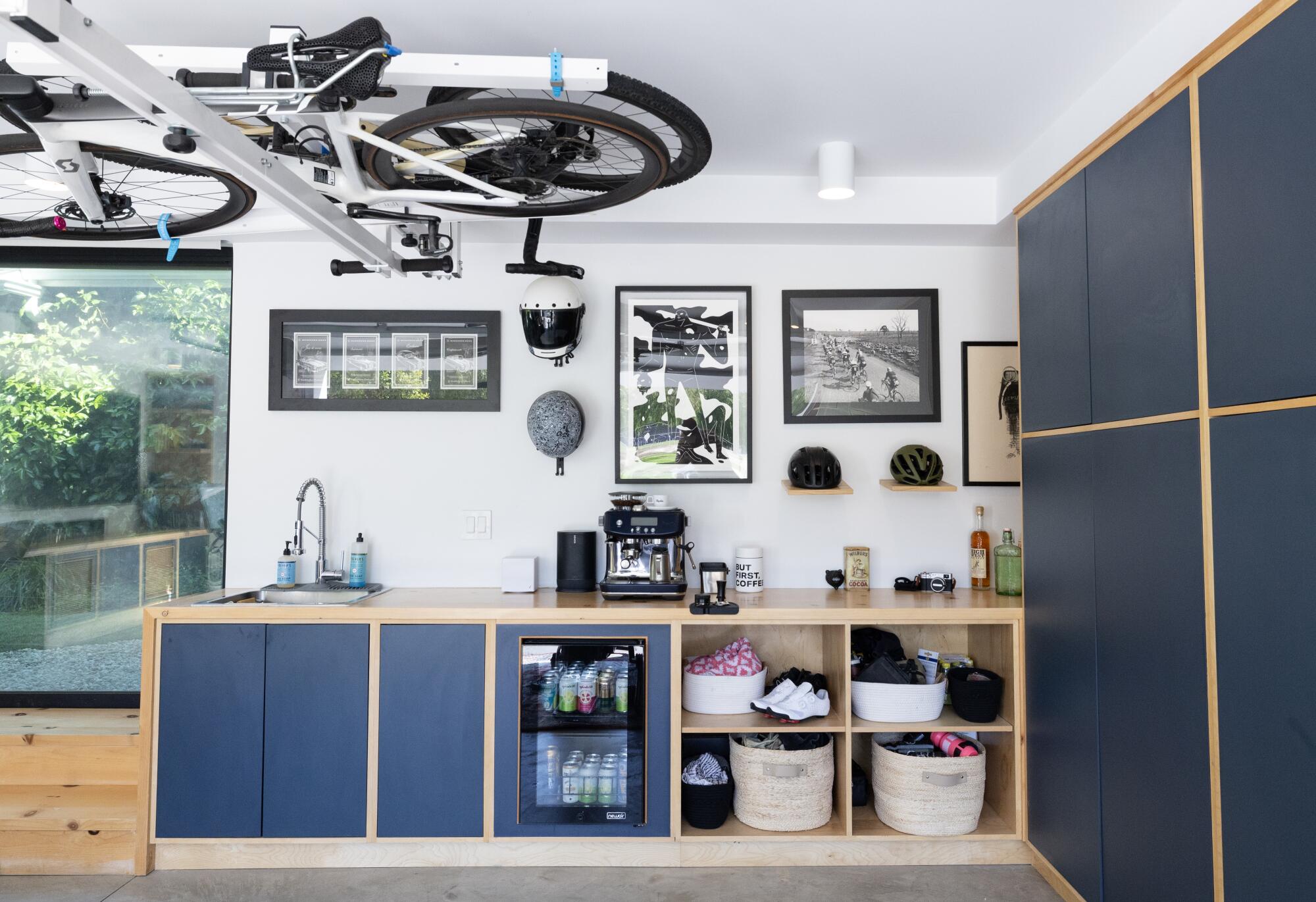
The ground floor of the ADU serves as a garage, office and media room for the family.
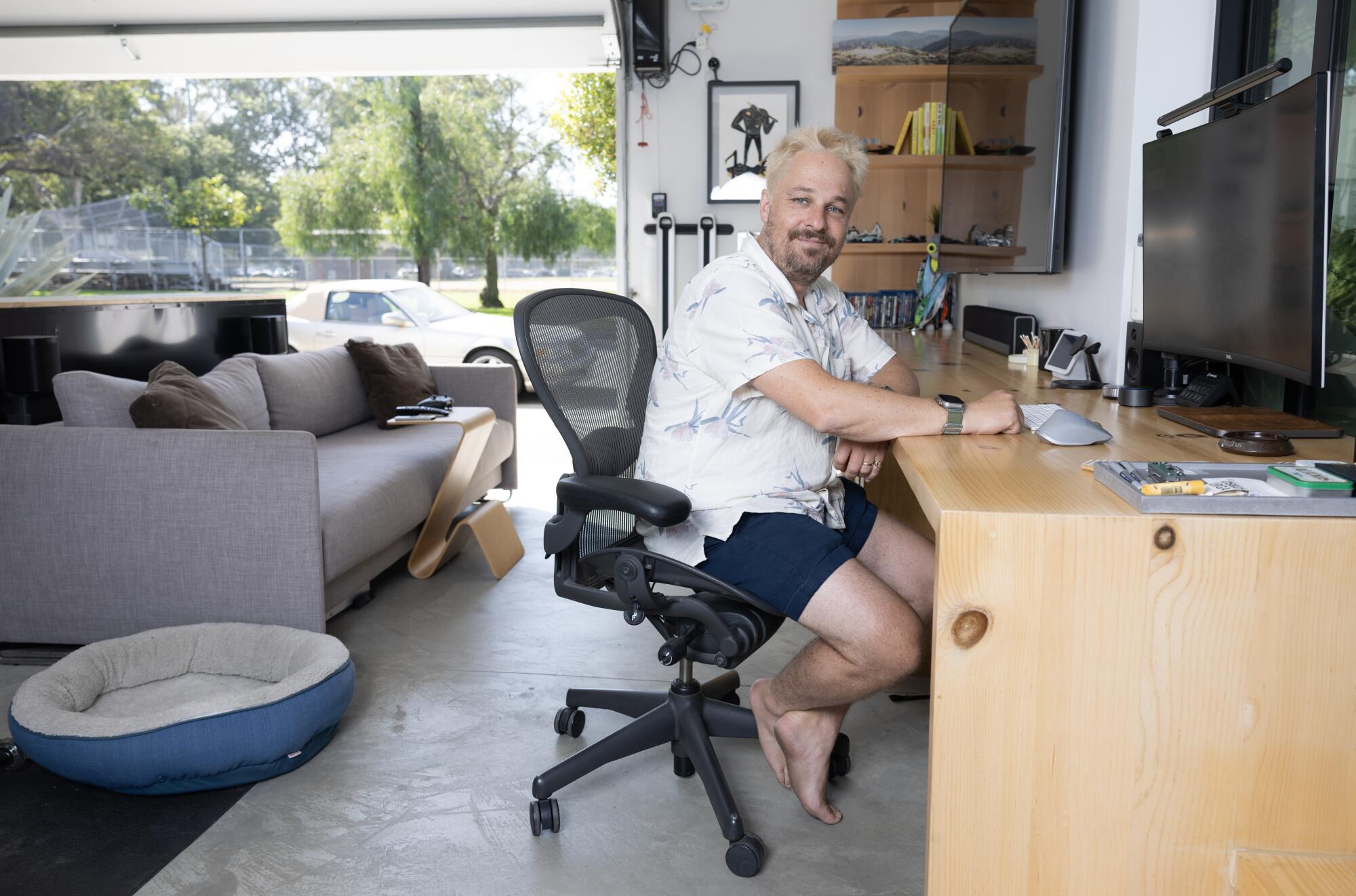
Burroughs installed a subwoofer speaker beneath the sofa to give the garage the feel of a movie theater during family movie nights. “Jack went flying off the couch when we watched “Top Gun,” he said, laughing.
“We wanted to contribute to the street and not just to the backyard,” Garvan said of a neighborhood tour he took on FaceTime with Burroughs. “It was crucial that the ADU referenced the neighborhood. That’s why we have the lovely tapered geometry and white fence paneling as cladding — it continues the fence and ties the house to the neighborhood.”
The couple, 41-year-old marketing executives who met while working at an advertising agency in San Francisco, may have wanted a showstopper. But they also wanted to respect their neighborhood, where small bungalows coexist alongside enormous, newly built homes in a Brutalist style.
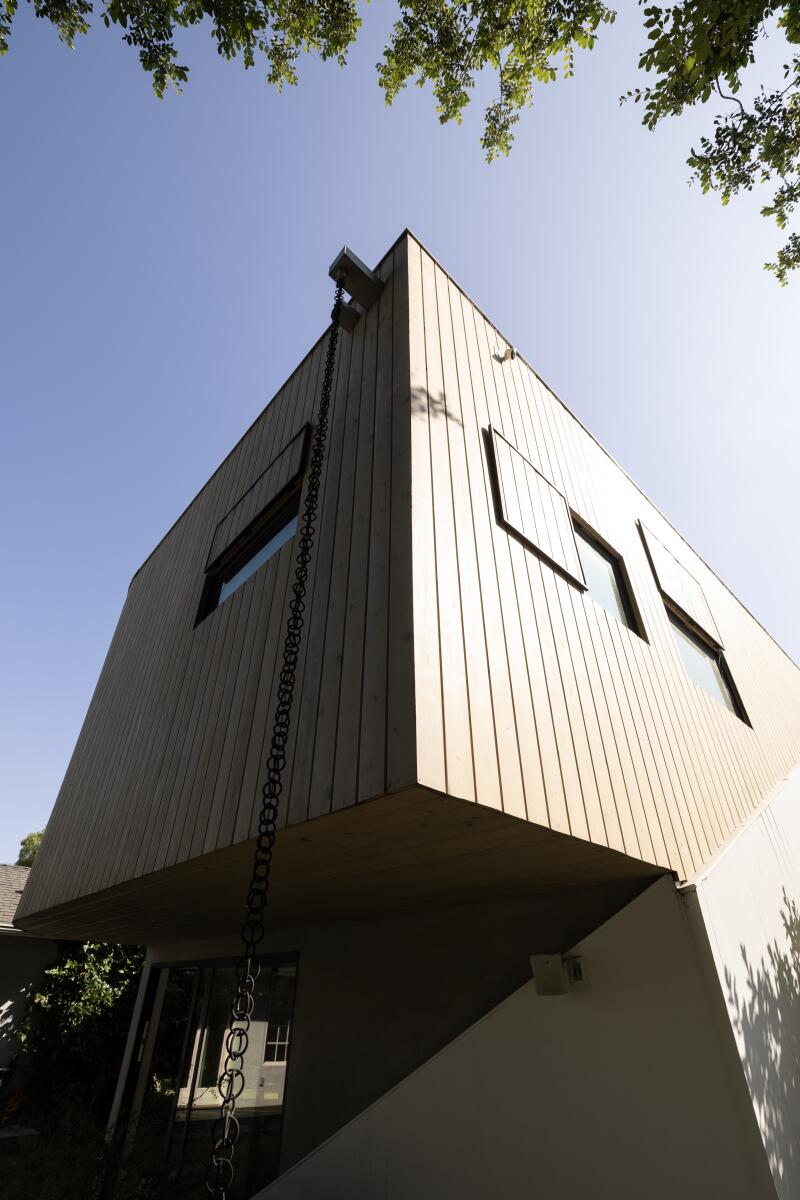
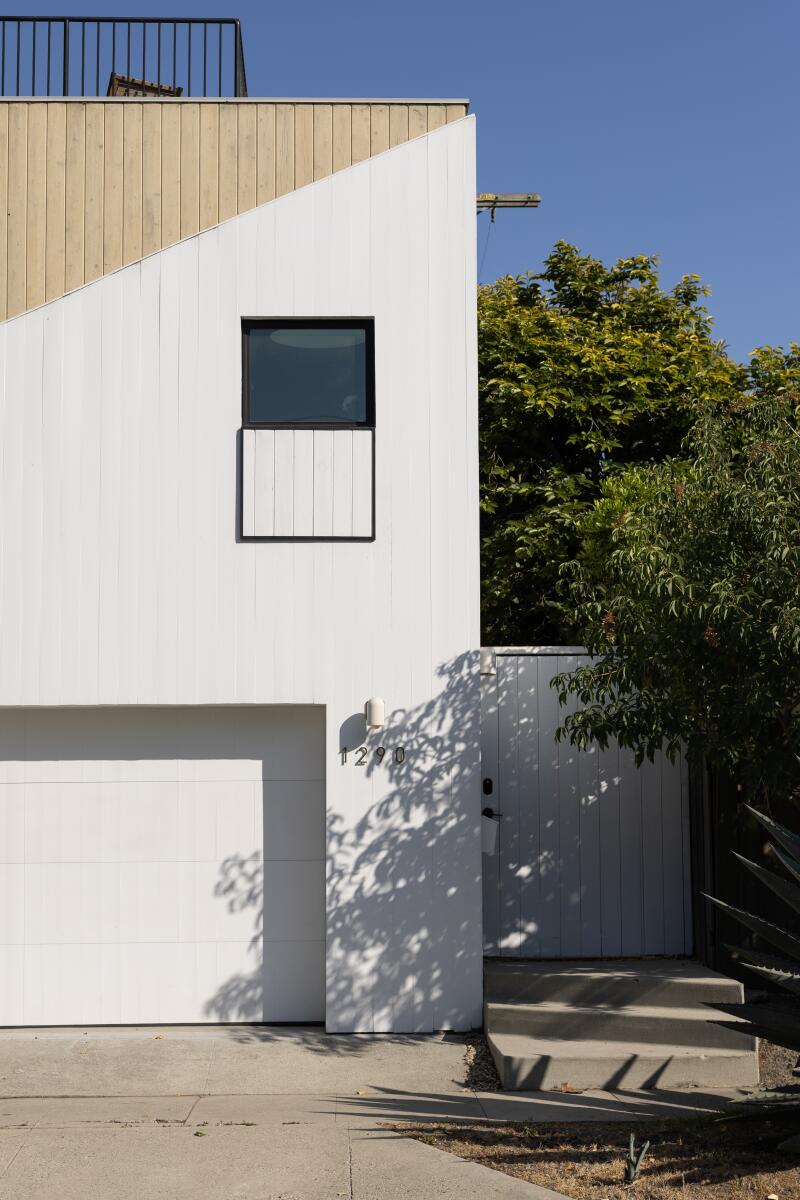
Dramatic shutters that can be opened and closed give the ADU the feel of a music box.
“We were adamant about not having a monolithic structure,” Burroughs said, emphasizing the neighborhood’s diverse architectural styles where noted Los Angeles architects such as Frank Gehry, Ray Kappe and Barbara Bestor have all practiced their craft.
Dabkowski, who was born in England and moved to Dallas when she was 11, shared a similar perspective in not wanting the ADU to stand out too much. “I grew up in the suburbs where homes were built in a development and all looked the same,” she said. “I love the array of different houses in Venice, but it is jarring when people build something out of scale with the neighborhood.”
Situated on a corner lot, the two-story ADU appears simple and square from the street and curvaceous and soft from the backyard. While the traditional 1949 bungalow out front is one level, the ADU out back is tall but doesn’t overwhelm the atmosphere of the street.


Jack Burroughs, 7, plays with blocks as the family dog Banjo runs into the ADU.
Once inside the compound, the ADU, which cost approximately $450,000 after several increases due to the custom millwork and spiral staircase, is not what you would expect. And that’s precisely the point.
“We told James from the beginning that the ADU is separate from the house and is supposed to be different,” Burroughs said.


Pink Los Angeles Toile wallpaper from Flavor Paper adds a touch of whimsy in the bedroom of the ADU.
Clad in stained cedar siding with shutters that open and close like a music box, the ADU is composed of a 460-square-foot garage on the ground floor and a 560-square-foot one-bedroom unit one flight up. A custom steel spiral staircase connects the two floors on the outside of the building, as it would have eaten up too much space if placed inside. Above it all is a rooftop terrace with views of Santa Monica, the Marina and Penmar Park, with Burroughs affectionately comparing it to “being up in the trees.”
Inside, the open-plan kitchen, living room and dining area are flooded with natural light from two large circular skylights. A waterfall island, equipped with storage on either side, dips to form a dining room table. Floor-to-ceiling custom cabinets in the kitchen continue into the living room, where they create a media center. Adjacent to a queen-sized Murphy bed, there’s a stackable washer and dryer, as well as a linen closet. Cork tile flooring adds warmth and serves as an acoustic buffer to help separate the unit from the office space below.
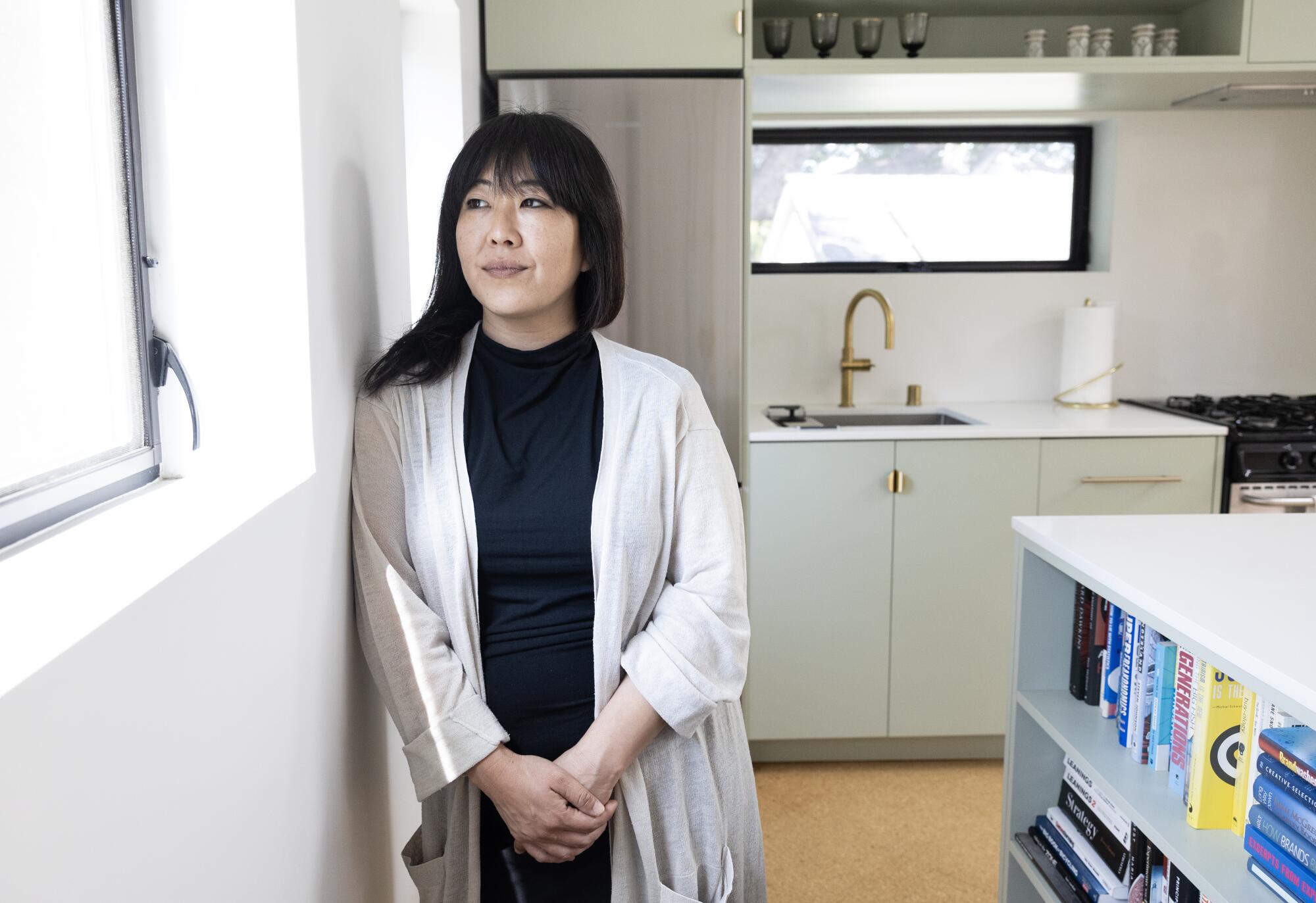
Architect Aejie Rhyu of ARA-la Studio in Los Angeles collaborated with Australian architect James Garvan on the project, which took more than a year to complete.
Working with interior designer Danielle Lanee, Dabkowksi added colorful accents to the living spaces to make the interiors “warm, inviting and fresh.”
“They wanted the ADU to be a fun experience for their guests,” noted Rhyu. “There’s an outdoor shower. Colorful lighting. It’s quite different from the main house, but it works because it’s situated on a corner lot. When you are in the backyard, you note that, but from the street, it almost feels like its own separate structure.”
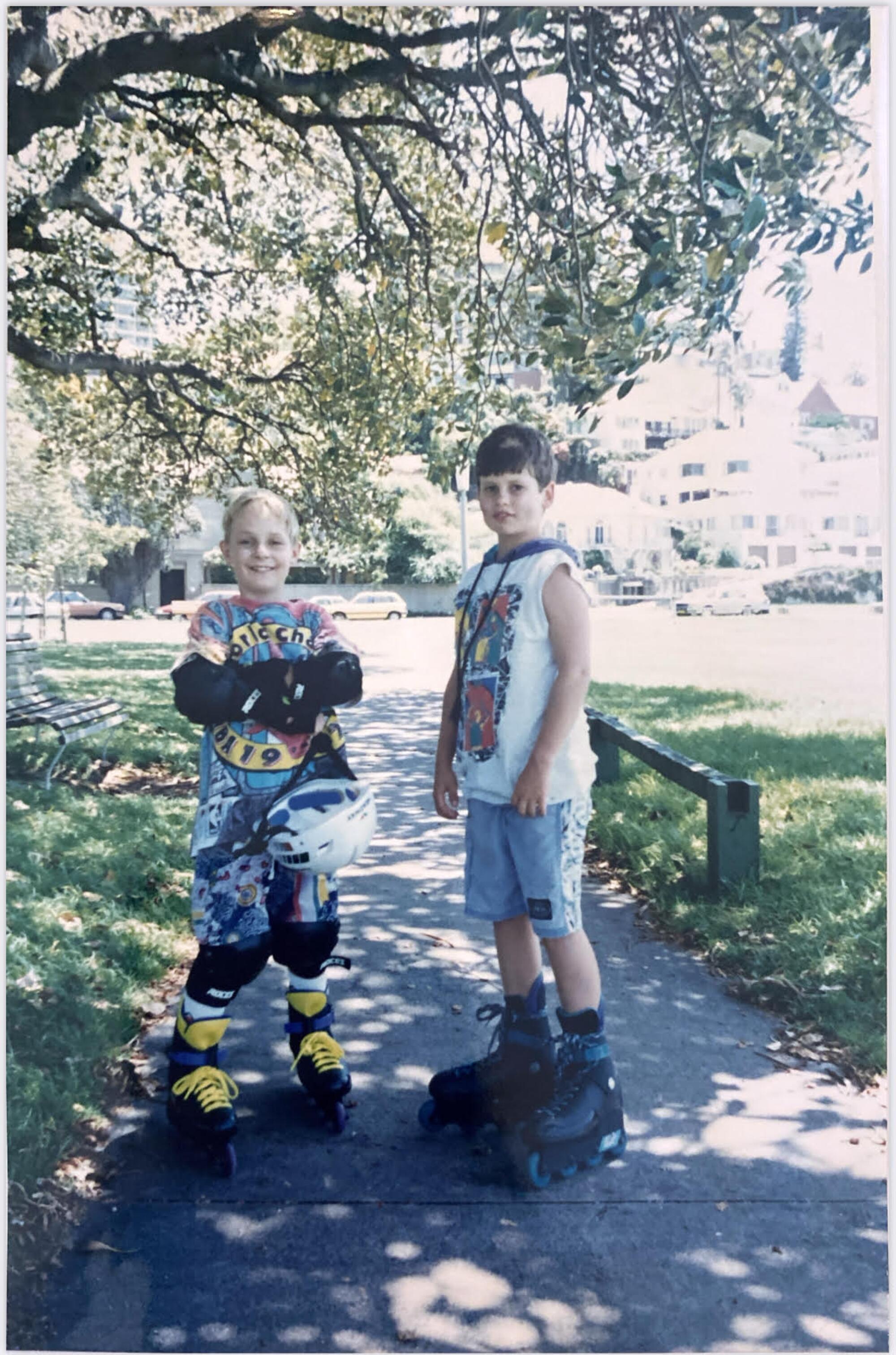
Will Burroughs and his future architect James Garvan prepare to rollerblade in Sydney, Australia.
(Courtesy of James Garvan)
At one point, Burroughs worried they were having too much fun with the colorful interiors, which include pink and red clé tile in the bathroom, pale green custom cabinets in the kitchen and pink Flavor Paper wallpaper in the bedroom. “I was worried it would feel like you were living in a Mondrian painting,” he said.
Now that it’s complete, however, Burroughs is thrilled with the way it turned out. “Frith added a lot of whimsy to the ADU,” he said. “I love that it feels homey and functional, and I love the balance with the architecture. Once you walk inside, you don’t feel like you’ve sacrificed form or function.”
In Sydney, where he grew up, Burroughs said architecture is often designed in harmony with the landscape. Here, his childhood friend was assigned the same task. “I was impressed that James was able to take a rectangular block … and make it sit beautifully with the trees and fence line,” he said. “And Aejie took drawings from afar, accomplishing them by walking around with a camera and reviewing drone footage. Aejie was able to take his high-order thing and make it work.”
Looking ahead, the couple envisions the unit could work as a rental, but for now, it has been booked by family and friends, including those who were displaced by the Pacific Palisades fires in January. The couple have hosted Burroughs’ parents for six weeks at a time, and friends with three kids — who shared the Murphy bed — stayed for 10 days.
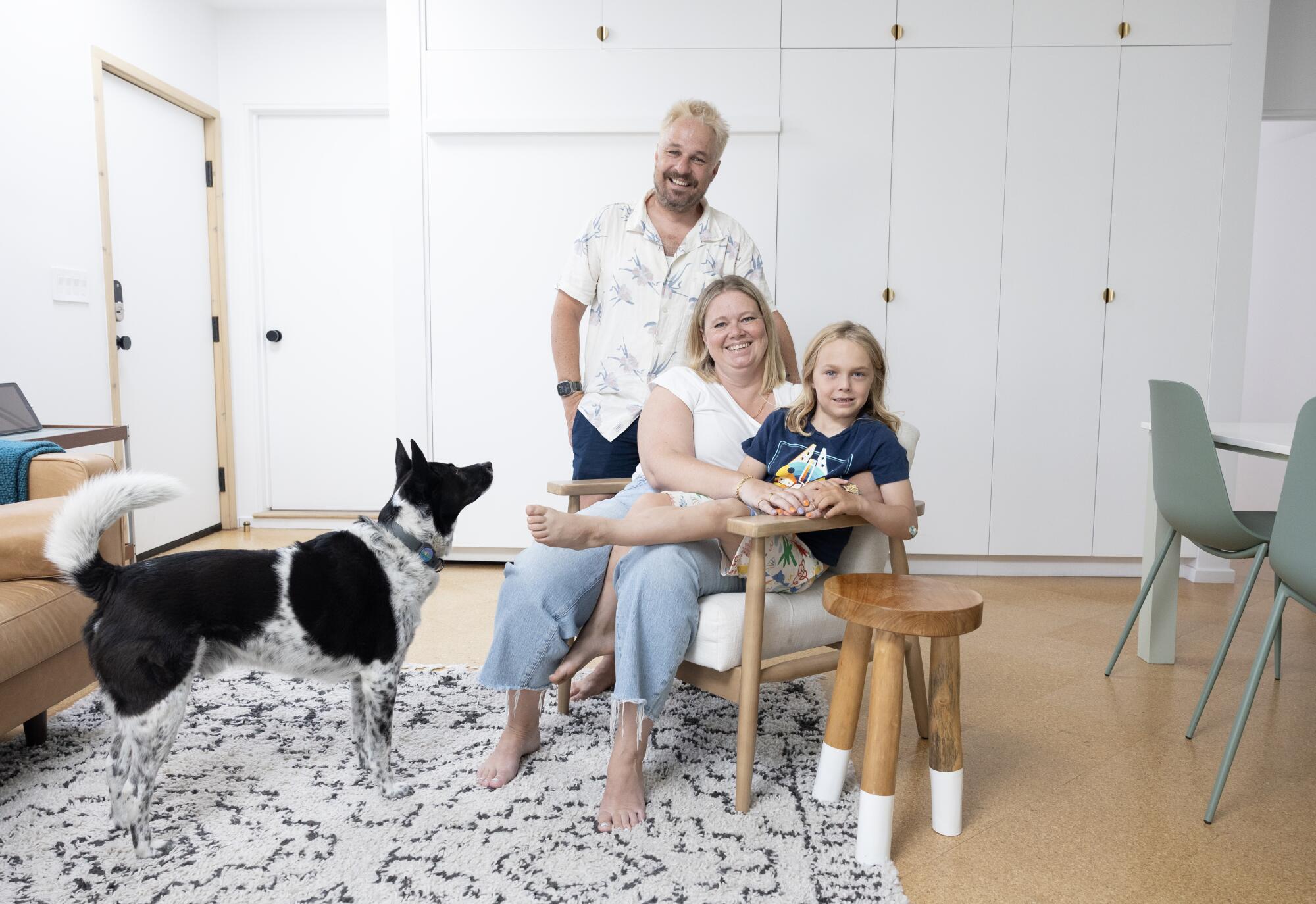
In the living area of the ADU, custom millwork includes a Murphy bed, floor-to-ceiling storage, a linen closet and a stackable washer and dryer.
“It’s nice to have enough space where family can come and stay comfortably for a decent amount of time,” Dabkowski said. “Staying in an Airbnb is expensive.”
The ADU impressed Burroughs’ parents so much that they hired Gavan to design a home for them in Sydney now that they are downsizing.
“They were so impressed with the skylights, the airflow of the unit, which improves our quality of life tremendously,” Burroughs said. “Our mothers are best friends. He’s [Gavan] going to be a part of the family even more now.”
“I am happy that my friends like their home, but I hope the community likes it too,” Gavan added. “I hope it contributes positively to the streetscape.”
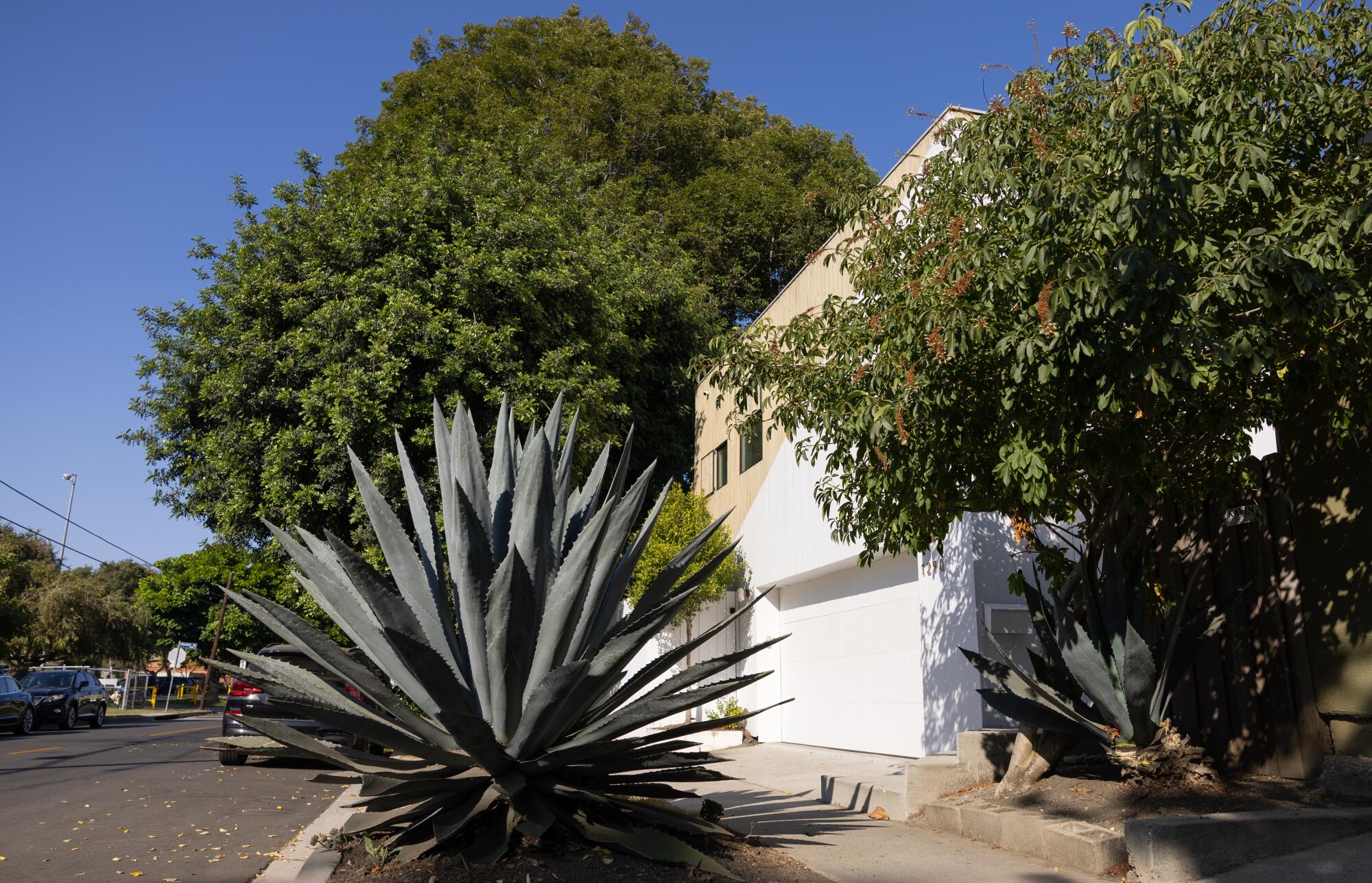
The ADU is designed to engage with the landscape and nestle into the garden, says architect James Garvan.

The couple treasure the personality and history of their 1949 bungalow. “We just love it so much and don’t feel like we need to match the ADU,” Dabkowski said. “The old and the new can live in harmony together.”
(Lisa Boone / Los Angeles Times )
Peek inside more Los Angeles ADUs
They spent $830,000 on a Silver Lake ADU, building a showstopper on a steep hillside
A two-car L.A. garage gets a surprising makeover as a West African-inspired ADU
Before and after: A South Pasadena garage is now a serene Kyoto-style ADU
She couldn’t afford a bigger house in L.A. So she built a stylish ADU for $230,000
After a decade of working out of coffee shops, two L.A. filmmakers add an ADU — twice
In L.A.’s tough housing market, cramped family adds ADU rather than move
First, they built an ADU ideal for surfers. Now, they’re ready to travel like nomads
They added an ADU that’s ‘not too big’ and ‘not too small’ to their L.A. fixer-upper
They spent $354,000 to build a modern ADU. Now they rent it out for $4,500 a month
How L.A. architects designed a 300-square-foot ADU that pulls in $1,750 a month
How a Spanish bungalow in L.A. went from sad to sexy (Hint: There’s an ADU rental)
She wanted more than a guesthouse for her sister. This tiny ADU in L.A. delivers
This ADU rental with windows galore is a houseplant lover’s dream
